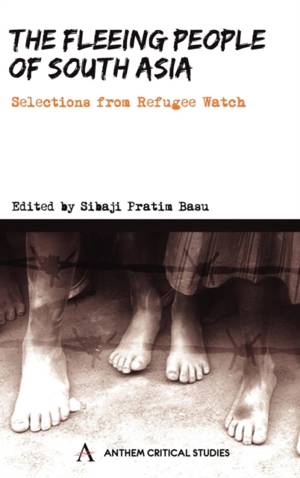
- Afhalen na 1 uur in een winkel met voorraad
- Gratis thuislevering in België vanaf € 30
- Ruim aanbod met 7 miljoen producten
- Afhalen na 1 uur in een winkel met voorraad
- Gratis thuislevering in België vanaf € 30
- Ruim aanbod met 7 miljoen producten
Zoeken
The Fleeing People of South Asia
Selections from Refugee Watch
€ 138,95
+ 277 punten
Omschrijving
The history of human civilizations is also the history of human displacements. From ancient times to the contemporary age, every year millions of people flee from their homes and lands in the face of imminent persecution for physical, social and cultural traits, which they cannot control, or exercising their religious or political beliefs. Large-scale 'development' projects as well as natural calamities have also caused large-scale displacements followed by ill-managed rehabilitation regimes. As a result, over one percent of the world's total population today consists of refugees and internally displaced persons. South Asia is the fourth largest refugee producing region in the world. There is a close link between state formation and forced migration in this region. Ethnic violence, development work, natural calamities and climatic changes also make people, especially the indigenous ones, flee and settle in extremely unbearable new and foreign conditions. Women and children constitute the bulk of the displaced population. Refugee Watch, in its decade-long 30-volume journey, has sought to capture the agony, tension and struggle of the refugees and internally displaced in South Asia in its different dimensions. The present Selections are a sincere attempt to grasp the multi-dimensionality of the journal within two covers.
Specificaties
Betrokkenen
- Uitgeverij:
Inhoud
- Aantal bladzijden:
- 480
- Taal:
- Engels
- Reeks:
Eigenschappen
- Productcode (EAN):
- 9788190583572
- Verschijningsdatum:
- 1/01/2009
- Uitvoering:
- Hardcover
- Formaat:
- Genaaid
- Afmetingen:
- 163 mm x 236 mm
- Gewicht:
- 839 g

Alleen bij Standaard Boekhandel
+ 277 punten op je klantenkaart van Standaard Boekhandel
Beoordelingen
We publiceren alleen reviews die voldoen aan de voorwaarden voor reviews. Bekijk onze voorwaarden voor reviews.







